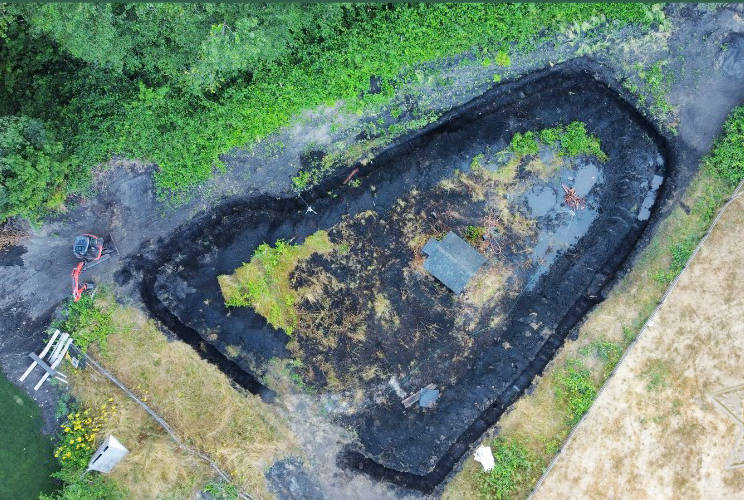Correction: An earlier version of this story misreported the mine for where the coal dust originated. It came from the former Elk Coal Mine, not the Hyde Coal Mine. Additionally, the fire was near historic Elk Coal and Durham in the Ravensdale area, not Cumberland. The errors originated with fire department reports.
A reminder of King County’s coal mining history recently came alive in a most interesting way.
It was early afternoon on July 26 when first responders heard of a fire in the 29300 block of 333rd Avenue Southeast. The location is off Kent-Kangley Road, not far from the tiny communities of Kanaskat and Palmer.
It wasn’t a typical fire, however. Rather, it stemmed from coal dust that was flooded throughout the area decades ago, according to a Facebook entry made by the King County Sheriff’s Office. That suspicion was echoed by Kevin Higgins, chief of King County Fire District 47, the small department serving the Kanaskat and Palmer areas north of Enumclaw.
According to the KCSO, investigators believe a rubbish fire, set two to four weeks ago, eventually ignited the coal dust.
Local mine historian Bill Kombol explained that “the coal dust flowed hydraulically from the Elk Coal mine (or possibly the Durham mine) to this area and filled in a large low spot in the topography.”
Higgins said the July 26 fire was limited to some disturbance of the land, but no one was injured and no property was damaged. Brush fires were snuffed out and hot spots were extinguished. The coal dust was at least four feet thick in the area, he said, adding that in some areas crews dug six feet into the ground before reaching soil.
An excavator was used to turn up the soil and the area was flooded with water, Higgins said. The smoldering situation was remedied in a day, he added, though an inspector arrived the following day to check on things.
“Fires like these are rare, but they can happen with enough time and heat,” the Sheriff’s Office posted. “This call serves as an interesting reminder of the long and storied history of coal mining in southeast King County and what it left behind.”


